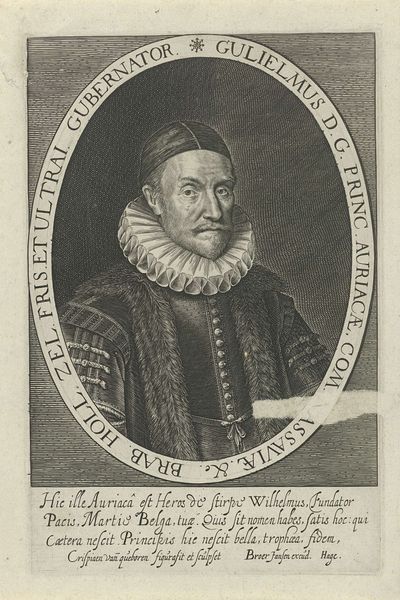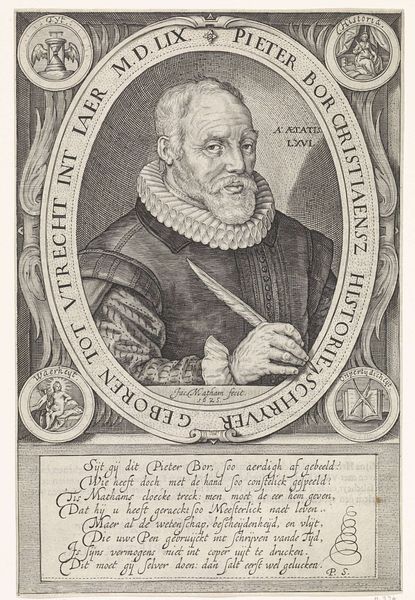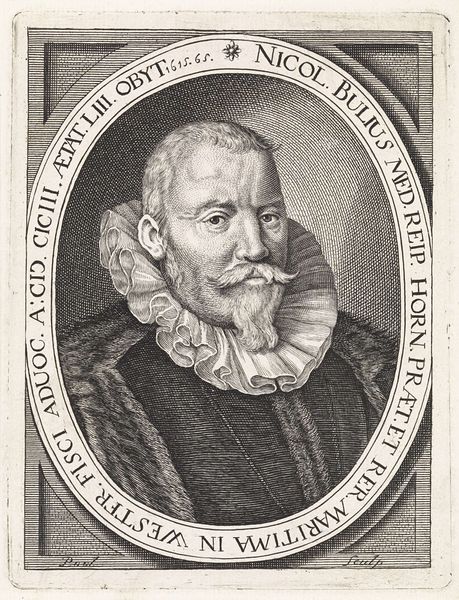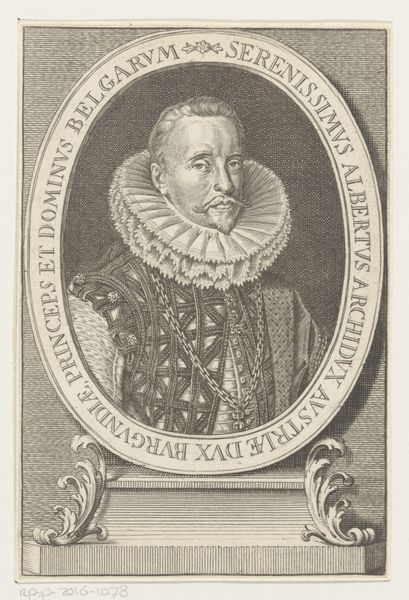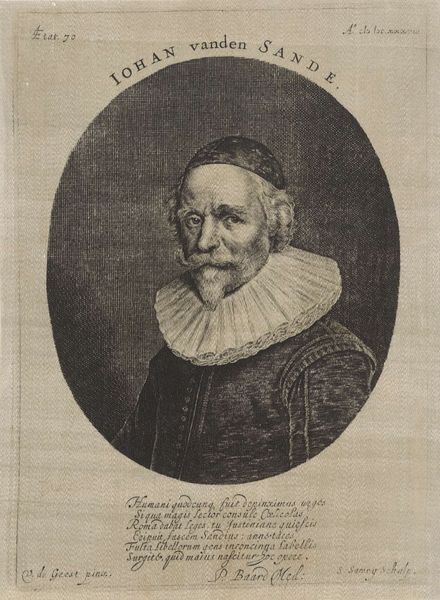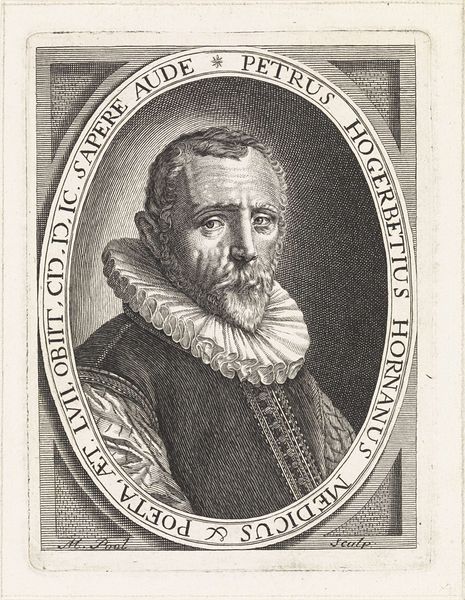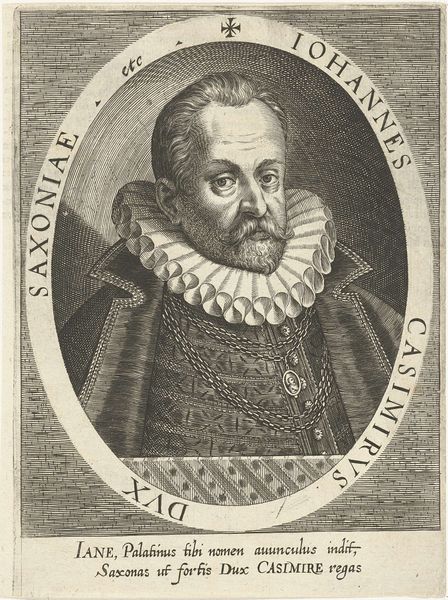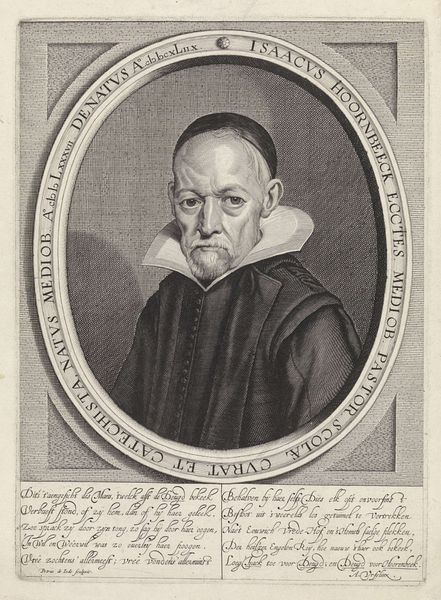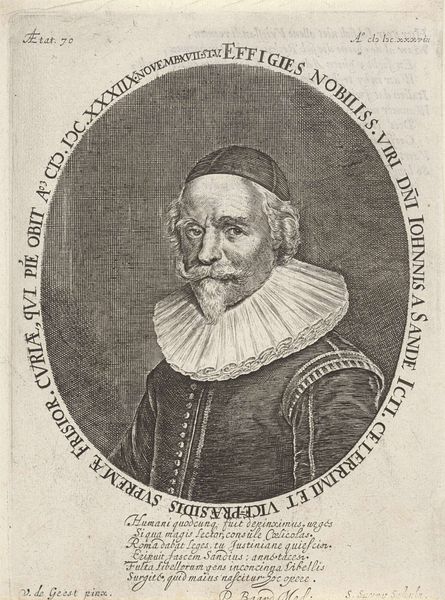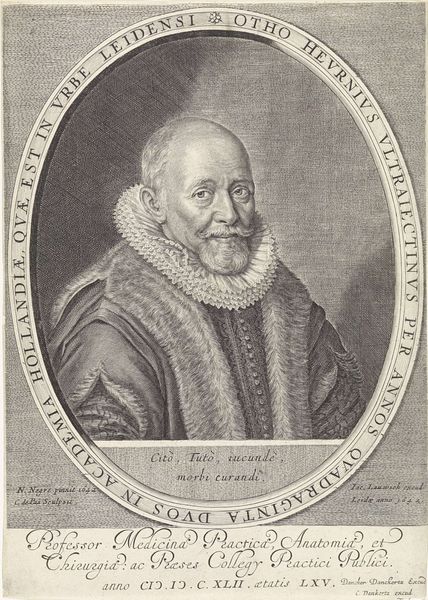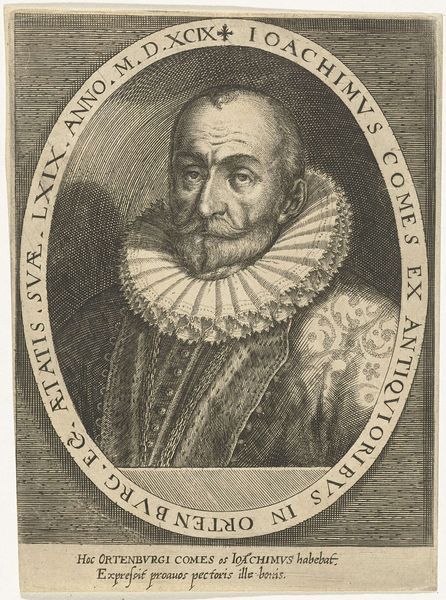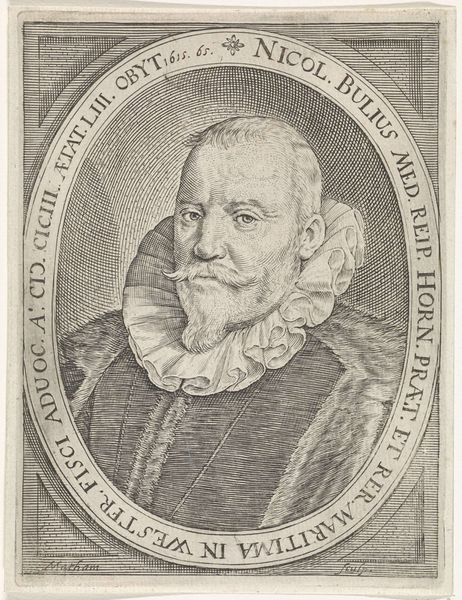
print, engraving
#
portrait
#
baroque
#
dutch-golden-age
# print
#
old engraving style
#
figuration
#
line
#
portrait drawing
#
engraving
Dimensions: height 180 mm, width 124 mm
Copyright: Rijks Museum: Open Domain
Editor: This is the "Portret van Jan van Hout," an engraving done in 1608 by Willem van Swanenburg, currently at the Rijksmuseum. The man's face seems worn, but dignified. What can you tell me about it? Curator: This portrait speaks volumes about the status and public role of Jan van Hout in his time. Note how the Latin inscription surrounding the portrait is framing him as someone important in the Republic. Have you thought about the significance of the text? Editor: Well, the words "Lugduno-Batavae" caught my eye, which I think means Leiden in Latin? It makes me think he must have been someone important to that city specifically. Curator: Exactly! Jan van Hout was the city secretary of Leiden, a very influential position. Consider the power dynamics at play: printmaking enabled the dissemination of his image to a wider public, constructing a persona of civic virtue and intellectual authority. How does that square with his slightly world-weary expression? Editor: That’s interesting… maybe it hints at the burdens of leadership, the weight of responsibility he carried for the city. Was this image intended for public distribution, almost like propaganda? Curator: Indeed, engravings like these were often commissioned to commemorate prominent figures and circulate their image within the community, reinforcing social hierarchies and celebrating civic accomplishments. They acted as a visual endorsement of his position within Leiden's society. It solidified his legacy and served a didactic purpose, reminding viewers of his contributions. Editor: That makes so much sense! I see how understanding the historical context can really deepen your appreciation of the piece. Curator: Precisely. By looking at the print through the lens of social and institutional history, we gain insights into how power, image, and public perception were constructed and circulated in the Dutch Golden Age.
Comments
No comments
Be the first to comment and join the conversation on the ultimate creative platform.
